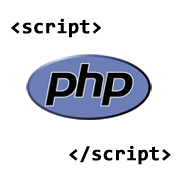Linking to jQuery: Always Reference a Specific Version

In this post, I’ll cover some reasons why you should always link to a specific version of jQuery and avoid using CDN references that link to ‘latest’ versions.


In this post, I’ll cover some reasons why you should always link to a specific version of jQuery and avoid using CDN references that link to ‘latest’ versions.

In other words, throughout your scripts you’ll probably have lines comparing values. JavaScript beginners who try to adhere to best practices may be using triple-equals and not double-equals, but might not fully understand what the difference is or why it’s important to stick to triple-equals.

In this post, which is based on what I’ve learned about callback functions, I’ll try to enlighten you on this fairly common JavaScript technique. And maybe some of our JavaScript experts can chime in and let me know what I’ve omitted or oversimplified.

It seemed like a simple task. After doing a search to see what types of plugins and scripts were floating around to do this, the examples I found seemed a little overly complex. While most solutions seemed to incorporate some complex math calculations, I thought of a better way.

Chris’s solution is interesting. He basically suggests (and I’m paraphrasing here) that we can give the empty elements semantic value by adding some text in each one to describe what each animated element does, or what mood it conveys. Then, the text in those empty elements can be moved off the page with CSS.
Some people got in a tizzy over the potential SEO penalties that could arise (which I kindly pointed out is probably not an issue) while others seemed to have a problem with Chris’s use of the word “semantic”.

Back when I worked for a Toronto web design agency, we often had to update sites that were written in straight HTML, with no server-side programming at all. So every year, clients that owned such sites would ask us to update all the pages to display the current copyright year. That was pretty lame. Not exactly the kind of work we wanted to be doing.
So we wanted to create a way that the current year would be printed on each page automatically. But we didn’t want to include a JavaScript library, we didn’t want to use Ajax, and we wanted the year to come from the server, not the client.

That alone should help you see how these types of simple animations work. But let’s take this a bit further.
CSS pseudo-classes and media queries (which I used in that other post to trigger the transitions) represent certain states for certain elements. These states occur after specific events on the page. So naturally, CSS3 transitions can also be fired using any JavaScript event. Let’s try a simple click event that toggles a class name.

Thus, when I visit a page on Wikipedia, it’s unreadable — because Wikipedia’s layout is fluid and it fills the whole monitor. It normally looks like this:

In one of the early chapters, Bruce mentions that when tags are not nested properly, the resulting generated DOM will be seen differently in different browsers. Of course, when you “view source”, the code will be the same in all browsers. It’s when you inspect the page (or view the “generated source”) using developer tools that the results can differ.
After some testing, this is indeed the case. Here’s the code that I tested:

for loop fairly often. Recently, when I coded, then re-coded these drop-down menus, during the re-code I ran my JavaScript/jQuery through JSLint using the option called “The Good Parts”.
I don’t know a whole lot about JSLint, but I figured that would be a pretty good way to ensure the code was efficient, relatively future-proof, and easy to maintain (i.e. it uses best practices).
The info JSLint provided, as well as other stuff I’ve read in the past, got me thinking about the simple JavaScript for loop and how it’s customarily written.